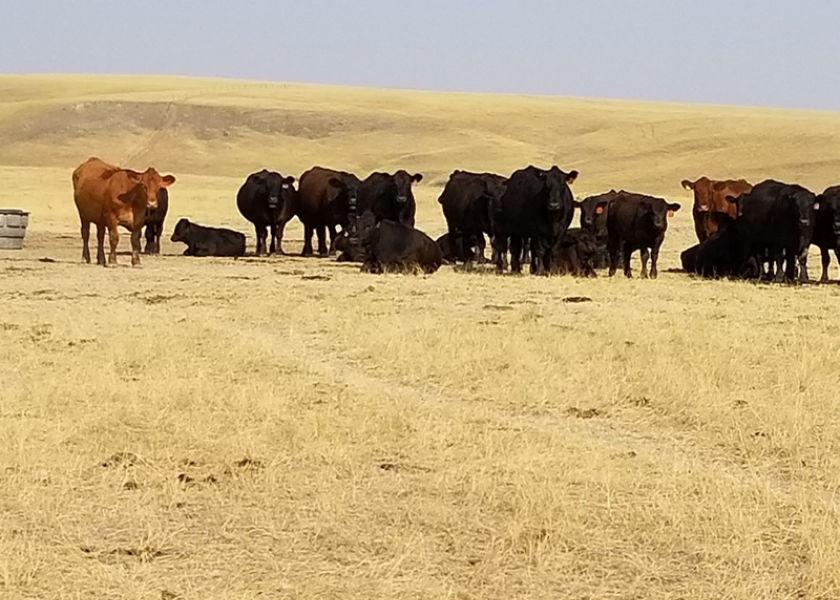Nutrition Key to Maintaining Herd Health During Drought

Nutrition is essential in normal pasture conditions, but when forage availability is limited, making sure cows and heifers receive the proper nutrients becomes even more critical. As drought conditions continue across the northern Plains and western U.S., being proactive with supplementation can help alleviate potential health issues in the cowherd.
Dr. Phil Kesterson, Zoetis beef technical services veterinarian, has weathered multiple droughts in the last two decades. He says acting early and decisively is the key to success.
“During drought, energy becomes our limiting nutrient,” he explains. “We have to understand that simply providing supplemental protein can result in a more rapid disappearance of our remaining forage, which further complicates other challenges.”
Consider supplemental feed
Maintaining body condition in cows and heifers is crucial for both re-breeding and feeding the calf. In dry conditions, trace mineral levels in forages can be decreased so hand-fed grain, range cubes, or by-product feeds can help meet the nutritional demands of the herd, says Dr. Dan Tracy, a member of the Zoetis Technical Services team.
“These cattle are already stressed because of environmental conditions and the lack of forage,” Tracy explains. “We certainly don’t want to cripple their immune system or reproductive performance by not providing those trace elements that are specific to those functions.”
Tracy adds that conferring with a nutritionist can be helpful to ensure cattle are properly supplemented to meet the energy, protein and mineral needs of the herd.
Monitor herd health
When grass is in short supply, the risk is greater for cattle to be affected by parasites. Kesterson recommends working with a veterinarian to implement a strategic parasite control strategy that best matches your production goals and the life cycles of parasites.
He adds that minimizing areas where animals congregate, with increased attention to fly management, is effective in parasite control.
“The more attention we pay to the new nutrition plan and the more effective we are at implementing that plan early is the most important thing we can do to overcome those challenges and reduce the chance of pitfalls,” Kesterson says.
Because cattle in drought conditions are already challenged, paying particular attention to the herd might help head off potential diseases such as anaplasmosis and bovine respiratory disease (BRD).
“It’s important in more mature cows to watch for signs of depression, lethargy and decreased appetite,” Tracy explains. “If you are bringing feed to the animals, watch the ones that hang back and stick to themselves or have any signs of clinical disease or any variations of normal.”
Tracy adds that replacement heifers and young stock can be especially vulnerable to BRD, so continuing an immunization regimen is especially important when the herd is challenged.
“During this time, producers are spending more money bringing feed to their herd,” Tracy says. “But we don’t need to skimp on the protocols we already have in place to maintain health, nutrition and vaccines. We’ve still got to make sure we put a good foundation on that immune response.”
Cull if needed
Maintaining an early and active plan for managing the herd through drought helps ensure cows retain body condition going into fall and winter. Because females that struggle to sustain weight can express reproductive inefficiency, Kesterson says pregnancy diagnosis can be a useful tool for culling.
He adds that pregnancy testing earlier than normal and disciplined culling based on age, udder issues and even temperament could result in significant feed savings.
“Our goal is to preserve the heart of our cow herd, and all of these strategies are going to help do that,” Kesterson explains. “Another significant consideration that we sometimes fail to recognize is that almost 20% of an operation’s annual income comes from animals removed from the herd.”







